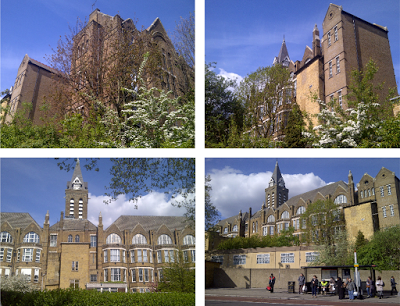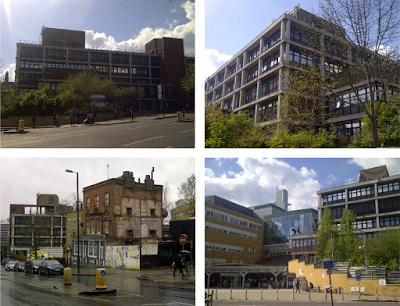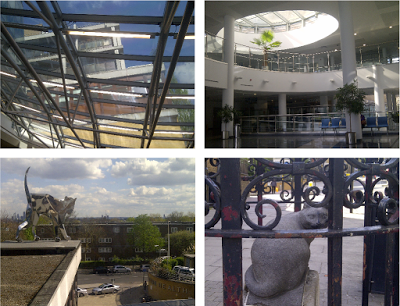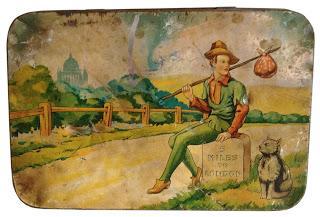There have been a lot of hospitals and a lot of name changes on these sites over the years. In the following paragraphs I have done my best to get the information correct. However, if you spot any errors, please do let me know. Here goes...

The impressive Edwardian buildings viewed from Highgate Hill.
The original main entrance for Archway Hospital can be found on the Archway Road side.
Then, in 1914 it became the Islington Infirmary (II). Five large linked blocks (shown above) had been added by 1920 and some of the original buildings were converted into a nurses' home which was accessed via a tunnel.
During the same period the Holborn Union Infirmary opened in 1879 in the southwest corner of the site with its main entrance on Archway Road (still intact and visible today). It had separate blocks for male and female patients in 625 beds. In 1921 the name was changed to the Holborn and Finsbury Hospital (HFH).
In 1930 the London County Council (LCC) took over the whole site – HFH was renamed St Mary's Hospital, and II became Archway Hospital. By 1948 both had merged with Highgate Hospital across the road to become part of The Whittington Hospital.
The modern hospitalThe latest buildings of the Whittington Hospital on the opposite side of Highgate Hill are a stark contrast in architectural design.Accident and Emergency, out Patients, Pathology and Imaging (X-ray) departments opened on the western side of Highgate Hill in 1977, and in 1980 a six-storey psychiatric wing was built. Further extensions and new buildings were opened in 1992. The entrance in Magdala Avenue was completed in 2008.

Top: the modern blocks of Whittington Hospital (1992?).
Bottom left: the Whittington & Cat pub hangs on for dear life whilst all around is demolished.
Bottom right; Whittington Hospital entrance in Magdala Avenue.

Top: left, the entrance canopy, and right, the second floor waiting area
Bottom: Cats – Whittington's metal feline and Dick's companion on Highgate Hill
The Highgate WingOn the Dartmouth Park Hill side of the Whittington Hospital estate there are some nice old brick buildings dating from 1869 from when this was The St Pancras Union Infirmary (later to become the Central London Sick Asylum District, then the St Pancras Union and subsequently the North Infirmary). Florence Nightingale has been quoted as saying that in its day the infirmary was "the finest metropolitan hospital". Edith Cavell worked there as a Night Sister in 1901.When the LCC took over this site in 1930 they renamed it Highgate Hospital. By 1945 it had been grouped in with its neighbours Archway Hospital and St Mary's Hospital to form The Whittington Hospital as part of the NHS.
Why Whittington?The grouping of all the three hospitals (Archway, St Mary's and Highgate) into one meant a new name was needed. "Trinity" was a front runner, but "Whittington" won. A well-known folktale tells us that Dick Whittington was walking on Highgate Hill when he heard the bells of Bow telling him to "turn again, turn again". The event is commemorated by a statue of his cat on The Whittington Stone on Highgate Hill (shown above, bottom right). He subsequently became Lord Mayor of London three times.

I collect old tins and gave this one to Jen as a birthday present earlier this year, thinking it would tie in well with her Archway guided walk.
See also The Temperance Hospital
